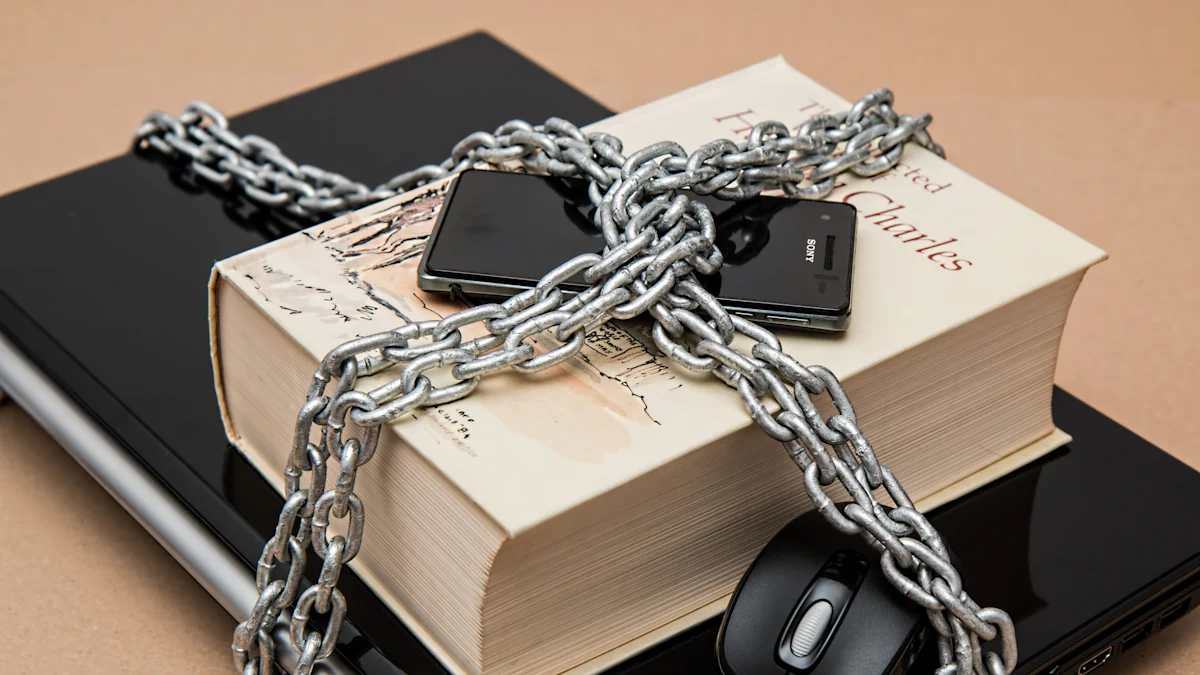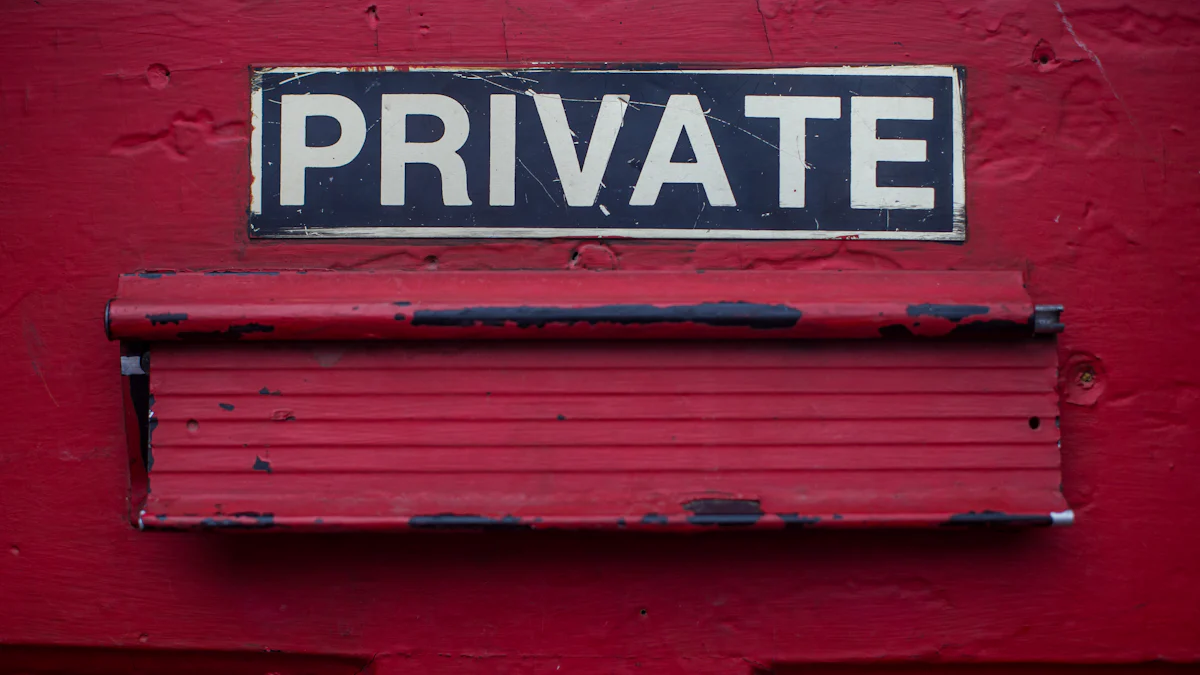How to Safeguard Your Privacy from Non-Consensual Image Sharing

Non-consensual image sharing involves distributing explicit images without permission. This issue affects about 4% of internet users, highlighting the need for vigilance. Privacy protection is crucial to prevent such violations. Victims often face emotional distress and legal battles. The impact can be severe, affecting mental health and social standing. Understanding the risks and taking preventive measures can help safeguard privacy. Tools like Aroused.AI offer solutions to enhance privacy protection. Awareness and proactive steps can protect against threats like imagenes phorno.
Understanding Non-Consensual Image Sharing
What is Non-Consensual Image Sharing?
Non-consensual image sharing involves distributing intimate images without permission. This act represents a serious violation of privacy. Examples include sharing explicit photos or videos without the subject's consent. Many individuals experience this breach through social media platforms or private messaging apps.
Legal Implications and Consequences
Sharing intimate images without consent is illegal in many jurisdictions. Most states classify this act as a crime, providing victims with legal recourse. Victims can pursue criminal and civil actions against perpetrators. The Privacy Act allows individuals to sue for compensation if their images are shared without consent. Legal consequences may include fines, imprisonment, or both. The law aims to protect individuals from exploitation and uphold their rights.
The Impact on Victims
Non-consensual image sharing can have devastating effects on victims. Emotional distress often accompanies the violation of privacy. Victims may experience anxiety, depression, or feelings of shame. The psychological impact can be long-lasting and severe.
Emotional and Psychological Effects
Victims often struggle with emotional turmoil following the unauthorized sharing of intimate images. Anxiety and depression are common reactions. Many individuals feel violated and powerless. The emotional burden can affect daily life and mental health. Professional counseling can provide support and help victims cope.
Social and Professional Repercussions
The social impact of non-consensual image sharing can be profound. Victims may face stigma and judgment from peers or colleagues. Professional opportunities may diminish due to reputational damage. The fear of exposure can lead to social withdrawal and isolation. Addressing these challenges requires understanding and support from the community.
Preventive Measures to Protect Your Privacy

Digital Security Practices
Strong Passwords and Two-Factor Authentication
You must use strong passwords for all online accounts. A strong password includes a mix of letters, numbers, and symbols. Avoid using easily guessed information like birthdays or common words. Consider using a Password Manager. This tool generates complex passwords and stores them securely. Two-factor authentication adds another layer of security. It requires a second form of identification, such as a text message code. This step makes unauthorized access more difficult.
Regularly Updating Privacy Settings
Regular updates to privacy settings protect personal information. Social media platforms often update their privacy policies. You should review these settings frequently. Ensure that only trusted individuals can view personal information. Adjust settings to limit who can see photos and posts. This practice reduces the risk of unauthorized image sharing.
Safe Sharing Practices
Being Cautious with Whom You Share Images
Exercise caution when sharing images with others. Trust is essential before sending intimate photos. Consider potential risks before sharing. Once shared, control over the image diminishes. Use Secure Messaging Apps for safer communication. These apps encrypt messages, making interception difficult. Only the intended recipient can view the content.
Understanding the Risks of Cloud Storage
Cloud storage offers convenience but poses risks. Uploaded images may become vulnerable to breaches. Understand the security features of the chosen cloud service. Enable encryption for stored files. Regularly review who has access to shared folders. Limit access to trusted individuals only. This practice minimizes the chance of unauthorized sharing.
Steps to Take if You Become a Victim

Immediate Actions
Documenting Evidence
Victims should document all evidence of non-consensual image sharing. Take screenshots of the shared images and any related messages. Record the URLs where the images appear. Keep a detailed log of dates and times. This documentation will support any legal action you decide to pursue.
Reporting to Authorities and Platforms
Report the incident to law enforcement immediately. Non-consensual image sharing is a crime in most states. Contact social media platforms and websites hosting the images. Use their reporting tools to request removal. Provide them with the documented evidence. Prompt action can prevent further distribution.
Legal and Emotional Support
Seeking Legal Advice
Consult a lawyer who specializes in privacy or cyber law. The Privacy Act allows victims to sue for compensation. Legal professionals can guide you through the process. They can help you understand your rights and options. Taking legal action can hold perpetrators accountable.
Accessing Counseling Services
Seek emotional support from counseling services. Non-consensual image sharing can cause significant emotional distress. Professional counselors can provide coping strategies. They offer a safe space to express feelings. Support groups can also connect you with others who share similar experiences.
Introducing Aroused.AI
How Aroused.AI Can Help
Aroused.AI offers robust privacy protection features. The platform prioritizes user privacy and data security. Advanced encryption safeguards all interactions. Secure data storage ensures that personal content remains confidential. Users can trust that selfies, texts, and voice messages stay private. Only the user and their AI companion can access this information. This approach allows users to explore their desires without fear.
Features that Enhance Privacy Protection
Aroused.AI provides several key privacy protection features:
- Advanced Encryption: Protects all communications and personal data.
- Secure Data Storage: Ensures that only authorized users can access stored content.
- Confidential Interactions: Keeps all exchanges strictly between the user and the AI companion.
These features create a safe environment for users. Individuals can engage with their AI companions confidently. Privacy concerns do not hinder the experience.
User Testimonials and Success Stories
Users of Aroused.AI have shared positive experiences. Many appreciate the platform's commitment to privacy. One user stated, "I feel secure knowing my data stays private." Another user mentioned, "The encryption gives me peace of mind." These testimonials highlight the effectiveness of Aroused.AI's privacy measures. Success stories emphasize the platform's ability to protect user information. Users enjoy a worry-free experience with their digital companions.
Resources for Further Assistance
Online Support Communities
Forums and Support Groups
Online forums and support groups provide a safe space for victims of non-consensual image sharing. These platforms offer a community where individuals can share experiences and receive advice. Many victims find comfort in knowing others face similar challenges. Support groups often include professionals who offer guidance and resources. Participation in these communities can help individuals feel less isolated.
Helplines and Hotlines
Helplines and hotlines offer immediate assistance to victims. Trained professionals provide emotional support and practical advice. These services operate 24/7, ensuring help is always available. Victims can discuss their situation confidentially. Helplines guide individuals through the steps needed to address their concerns. Access to such resources can empower victims to take control of their situation.
Educational Materials
Books and Articles
Books and articles educate individuals about non-consensual image sharing. These materials cover legal rights, preventive measures, and emotional coping strategies. Reading about others' experiences can provide insight and understanding. Authors often include expert advice on handling specific situations. Educational materials serve as valuable tools for those seeking knowledge and empowerment.
Workshops and Webinars
Workshops and webinars offer interactive learning opportunities. Experts lead sessions on privacy protection and digital security. Participants learn practical skills to safeguard their online presence. Workshops often include discussions on the emotional impact of image sharing. Webinars provide access to information from the comfort of home. Engaging in these activities enhances awareness and preparedness.
Addressing "Imagenes Phorno"
Understanding "Imagenes Phorno"
The term "imagenes phorno" refers to the unauthorized sharing of explicit images. This phrase often appears in discussions about non-consensual image sharing. The terminology highlights the violation of privacy and consent. Many people use this term to describe the illegal distribution of intimate photos.
The Terminology and Its Implications
"Imagenes phorno" carries significant implications for privacy rights. The term underscores the breach of trust involved in sharing intimate images without permission. Legal systems in many states classify this act as a criminal offense. Laws aim to protect individuals from exploitation and uphold personal privacy. The terminology serves as a reminder of the serious consequences for perpetrators.
How It Relates to Non-Consensual Image Sharing
Non-consensual image sharing involves distributing images like "imagenes phorno" without consent. This act represents a form of digital abuse that affects victims emotionally and socially. Victims often face stigma and judgment due to unauthorized exposure. Legal actions provide a path for victims to seek justice and compensation. Understanding the relationship between these terms helps raise awareness about privacy violations.
Safeguarding privacy from non-consensual image sharing remains crucial. Protect personal data by implementing strong security measures. Use encryption and access controls to enhance protection. Regularly update privacy settings to stay secure. Proactive measures ensure long-term safety against digital threats. Seek help immediately if victimized. Access legal advice and emotional support. Empower yourself with knowledge and resources. Take control of your privacy and protect your digital presence.
See Also
Secure Guidelines for Participating in AI Erotic Conversations
Top Recommendations for Improving Your Adult AI Chat Interaction
Efficient Strategies for Circumventing Adult Content Restrictions in AI Conversations
